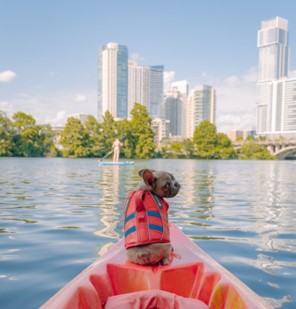Nicholas Adam Ergle is an experienced boater who enjoys the unparalleled sense of freedom and adventure that comes from being out on the open water. In the following article, Nicholas Ergle discusses the importance of thoroughly understanding waterway navigation systems to ensure a pleasurable journey on the water. Navigating open water is a critical skill for boaters, as it ensures both the safety of the vessel and those aboard. Nicholas Ergle dives into the intricacies of reading navigational charts, using boating GPS systems, and deciphering waterway markers. By mastering these skills, boaters can ensure a safe and enjoyable boating voyage.
Nicholas Ergle explains that navigational charts, also referred to as nautical or marine charts, are essential tools for boaters. They provide vital information on water depth, hazards and navigational aids like buoys and lighthouses. These maps are created by national hydrographic offices like the National Oceanic and Atmospheric Administration (NOAA) in the United States or UKHO (United Kingdom Hydrographic Office) in Great Britain. Reading navigational charts effectively requires understanding the symbols and markings used to represent various features. The International Hydrographic Organization (IHO) has created a set of standard symbols known as the International Chart Series that make this possible. Mr. Ergle says that navigable charts come in various scales and types, each designed for specific uses:
Boaters must select the ideal chart for their trip, providing them with all the essential data to navigate safely and efficiently reports Nicholas Ergle.
Global Positioning System (GPS) technology has revolutionized marine navigation by providing precise real-time position data. Boating GPS systems rely on a network of satellites orbiting Earth that transmit signals to receivers aboard the vessel, which then calculate the user's position by measuring how long it takes for those signals to arrive from the satellites. Nicholas Ergle says that when it comes to boating GPS systems, there are plenty of options. From handheld units to fixed mount options with built-in chartplotters, some of the top brands include Garmin, Raymarine and Lowrance. When selecting a system, boaters should take into account both individual needs and budget constraints. Navigating with a GPS system requires inputting a destination or waypoint, and the system will calculate the best route to get there. It will display the boat's position on a digital chart, giving real-time information about speed, heading and estimated arrival time. To use GPS effectively, boaters must become acquainted with its features and capabilities. GPS systems are usually reliable, but they may occasionally experience issues such as signal loss or inaccuracies. Nicholas Ergle says that boaters should always carry backup navigation tools like paper charts and a compass just in case and update their GPS software regularly for optimal performance.

 Deciphering Waterway Markers
Deciphering Waterway MarkersWaterway markers, also referred to as aids to navigation (ATONs), are essential for safely navigating waterways. They provide information about channels, water depth, potential hazards and preferred routes. The International Association of Marine Aids to Navigation and Lighthouse Authorities (IALA) has developed two standards - IALA A and IALA B - which standardize waterway marker placement around the world. Nicholas Ergle explains that waterway markers in the United States and other IALA B countries include:
Nicholas Ergle says that understanding and interpreting waterway markers are critical for safe navigation, as they guide boaters away from potential hazards and onto the correct routes through waterways.
While the thrill of boating is unparalleled, it is crucial to prioritize safety by properly utilizing waterway navigation systems, ensuring an enjoyable and secure experience for those both on the boat, and throughout the waterway. Read more at boatoutfitters.com